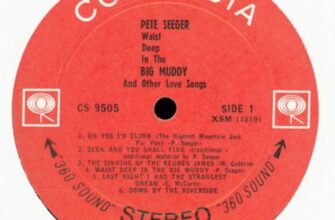I have always proudly proclaimed myself as “A CHILD OF THE MEDIA,” being a member of the first generation that was born with a TV set in their home. If memory serves, it stood about five feet tall and the front cabinet could not have been more than a foot wide. The screen was most likely between seven and ten inches and produced a satisfactory black and white image. Although Color TV was heavily promoted by television manufacturers in 1956, they were a rare item in most working-class homes. We would finally acquire our first color set when I was ten; after convincing my parents it was a must-have item as all three major networks would be broadcasting their entire prime-time lineup in the color format.
A person from 1956, would probably be as amazed by the medium’s evolution as someone from 1900, seeing television in the fifties for the first time. That analog set with its knobs and buttons, cathode-ray, tubes and antennae that our family had when I was born is as out of date and useless as a buggy-whip in today’s society. We now live in the digital age, with high-definition transmissions and seeing a 42 inch set is now common place, however there are screens far smaller than the one I grew up with as many people watch their favorite shows on their cellphones.
The changes in our receivers is just one of many changes as TV has come of age. Both the content and the suppliers of our entertainment have been radically transformed over the last 30-years. The word “BROADCASTING,” constantly used in conversations about the medium; is actually a misnomer. The days of television being a true broadcast-medium ended with cable television infiltrating homes and the Networks ending up with smaller sharers of the pie.
Back in the day when three networks had an iron grip on the industry, TV programmers tried to bring every viewer to the table with their shows. If you weren’t a fan of Westerns, you knew there was likely a variety show on one of the other networks and perhaps a half-hour comedy on the third. If you resided in a big enough market, there was an independent station or two, until the UHF frequency made more room for programming. Every market also had a PBS station, however their viewership was far below their commercial competitors.
The more diverse your lineup was would determine how many eyeballs watched your programming. CBS usually dominated the ratings, although ABC flourished in the mid to late seventies. NBC, under the leadership of Grant Tinker and Brandon Tartikoff ruled the airwaves in the eighties by having the courage to program shows that bent the envelope, including Hill Street Blues, St. Elsewhere and even the Cosby Show, which was the first TV show to portray a black family with both the mother and the father professionals.
Cable TV became common place in our country during the eighties and suddenly our choice of what to watch grew bigger each year. That would also be the end of the “BROADCASTING ERA” in television. The medium had evolved into “NARROWCASTING” or niche broadcasting, with each outlet attempting to reach their target demographic. TV watching stopped being the communal family event it had once been, as each member of the brood had their own set and watched the shows that interested them.
The eighties also brought along another piece of technology, that would change the medium and the viewing habits of the audience. Within a few years almost every home in America owned a VCR, making the viewer more of a master of their domain. If your favorite show was on at an inconvenient time, no problem! You just recorded the show and watched it at your convenience. The VCR also gave people the opportunity to watch an uncut blockbuster movie in the privacy of their own home and at any time they wanted to view it. That technology may seem stone-age if you are a millennial, but it set the foundation for what the medium is today.
The DVR is now our recording unit of choice and we are no longer restricted to watching our favorite shows on televisions. We can reach shows, on our phones, our tablets and our laptops. Cable now faces new competition in Satellite providers and the Internet is a burgeoning force in the war for viewers. Every network has their own website and almost every one of those sites video-stream their prime-time programming lineup. Even the Nielsen Company has had to make changes due to this new frontier, as they now allow DVR viewing added to a show’s number when it originally airs.
The once dominant Networks are now taking risks on programming and that can only benefit the most important people in this dynamic, the viewer. With major cable outlets producing land-mark shows such as the “Sopranos”, “Breaking Bad” and “Justified”, the Networks have recently stepped up the level of competition. Shows such as “LOST”, “Fringe” and this year’s Rookie Of The Year “The Blacklist”, prove that the Networks can stand toe-to-toe with any competition if they remain determined.
In very many ways, this is a “GOLDEN AGE” for television and we at Not Just Another TV Site are stoked for the future, not just this upcoming September, but for months and years to come. We plan to talk about all aspects of the medium, providing show-recaps as well as discussing how TV handles news, sports and a variety of other subjects. All TV shows should come to the table with this implicit promise, to entertain, educate or inform and the best shows cover all those bases. That is what we hope to carry out here at Not Just Another TV Site and we hope you come along for the ride.







